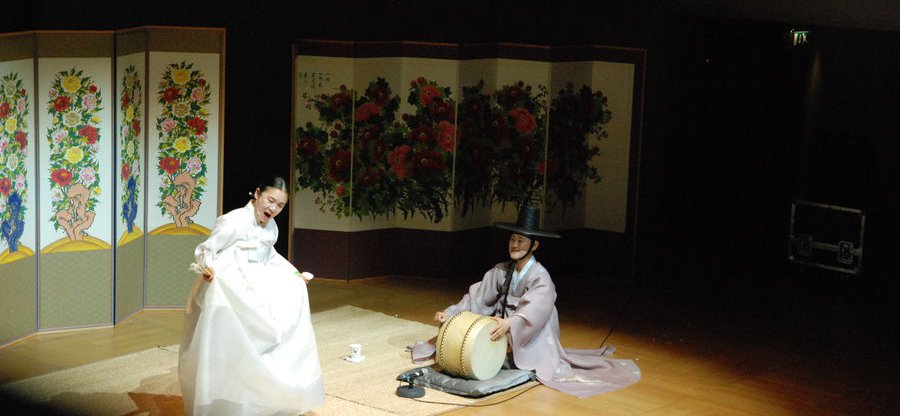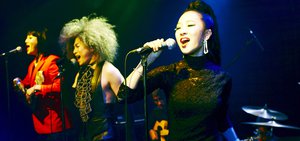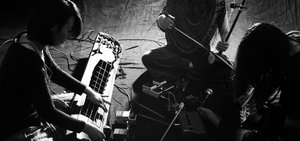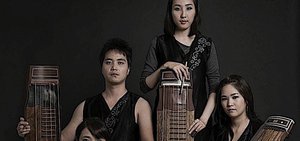K-Music Festival 2013: PANSORI NIGHT

Pansori is often described as traditional Korean opera, but it’s more interesting than that. Unlike Italian opera, which was an aristocratic form subsequently embraced by the people, pansori is a folk form that got taken up by the aristocracy. Whereas most operas have tragic endings, the pansori stories, like most folk tales, are happy – although there’s often plenty of grief along the way. Seeing pansori with a Korean audience in an intimate space is like witnessing flamenco in an Andalucian peña – it is vivid and fun, with the spectators gasping and yelling cries of approbation, just as the Spanish shout ‘olé’.
Pansori is another uniquely Korean art form of which they are extremely proud. It is traditionally performed by a singer (gwangdae) and a drummer (gosu). Complete performances can last three or four hours, although in practise the highlights of the stories are presented in a mixed setting, as in this performance. In 1964 pansori was designated Intangible Cultural Property No 5 and it was put on UNESCO’s Intangible Cultural Heritage list in 2003.
For this London performance, we have Korea’s greatest pansori star Ahn Sook-Sun, who is well accustomed to taking pansori to an international audience – she has performed all over the world, and was featured both at Womad and the Edinburgh International Festival a few years ago. “Pansori is more like a conversation than a song,” she says. “I can create an empathy with the audience; they can feel the breathing and sense the emotion through the tone of voice.”
Like kimchi, Korea’s famous fermented cabbage dish, pansori is a bit of a Marmite experience - people love it or hate it. There are just five surviving pansori stories, each with their own character. Heungbo-ga, which will be performed at Cadogan Hall, is largely comic in character.
Heungbo-ga is the story of two brothers, one good, one bad. Nolbu, the rich, bad one drives Heungbo, his younger brother, out. Despite his hardships Heungbo takes care of a swallow’s broken leg and is repaid with a seed that grows into a gourd full of treasure. Nolbu is furious and, seeing his brother’s fortune, breaks a swallow’s leg on purpose, in order to repair it. In return he gets a seed containing demons. But the virtuous Heungbo forgives him and shares his fortune with his brother. The most famous part of Heungbo-ga is the opening section which depicts Nolbu’s wickedness – he kicks cripples, pees in the wine, steals a drum from entertainers and pastes dung in the eyes of a blind man. Not a nice guy.
Ahn Sook-sun is Korea’s most celebrated pansori singer and has the rare designation of ‘Living Intangible Treasure’ in Gayageum Byeongchang (Intangible Cultural Property No 23) – the art of singing pansori and playing the gayageum at the same time. “To be a living national treasure has a very important meaning,” she says. “I’m a link between the old and the new and I am proud of being a cultural keeper who can show the younger generation what the previous one was like..”
As well as extracts from Heungbo-ga, including a section of Gayageum Byeongchang, tonight’s concert also includes instrumental sanjo pieces for solo instrument and percussion. Sanjo is something like a raga performance in Indian music, with sitar and tabla for example. Instead of tabla, Koreans use a double-headed hourglass drum called janggu. As with a classical Indian piece, the music is largely improvised, according to certain rules and moves from slow to fast. We will hear sanjo on two of Korea’s zithers, the plucked geomungo with 12 strings and the six-string geomungo, played with a short stick. It’s a great way to hear the real artistry that goes into playing these beautiful instruments.




